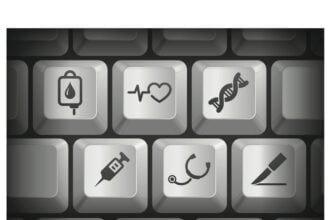Having and effectively using an online presence—website, social media, etc.—is a primary channel for connections between patients and providers.
Having and effectively using an online presence—website, social media, etc.—is a primary channel for connections between patients and providers. It is the principal means for the newly empowered healthcare consumer to find and act upon authoritative information.
Just for starters, actively using social media in healthcare includes these points of value:
- Establish patient (and prospective patient) connections
- Engage a targeted audience and grow relationships
- Speak to individuals with common healthcare interests and issues
- Assess, manage and extend professional reputation and/or promote your brand
- Provide a friendly, low-key environment for timely interaction
- Demonstrate advocacy, thought leadership and professional opinions
- Facilitate service and not selling
- Solicit ideas and exchange timely information
- Showcase community activities and professional achievements
- Provide awareness and education about specialty and experience
- Attract, recruit, retain and train professional colleagues
- Promote a healthy lifestyle, compliance and personal health management
- Reach reporters, journalists and bloggers
- Facilitates emergency/crisis/disaster communications
- Fundraising information, as appropriate, for non-profit and foundation purposes
- Reveal the personalized, “people side” of healthcare providers and staff
- Leverage and extend your online presence for greater involvement and visibility
- Use success stories to illustrate capabilities
Additionally, embracing social media could help doctors reduce workloads by moving some interactions that are currently done by phone or in the office to faster and more convenient social media platforms. (Tell us what you would add to this list in the comment section below.)
It’s no longer a matter of IF…it’s all about the HOW…
Physicians and hospitals are personally well acquainted with social media and the Internet as a professional resource. But within the provider, hospital and healthcare sectors, there is a significant opportunity to extend the uses and effectiveness of social media.
Some of the key considerations in harnessing social media tools include:
- Focus on the dominant and most familiar SM platforms. The big names are the popular sites…and that’s where you’ll find most of the people.
- Identify the tools most favored by your target audience. With rare exception, your social media plan will primarily consider and use only a few—but mightily important—sites. (See the item above.)
- Don’t begin more than you can consistently maintain. There is no initial cost for most social media sites (although most have an optional, paid advertising model). But there is an ongoing commitment to the time and attention to regularly update and refresh social media. A neglected social media presence can do more harm than good in the long run.
- Social media facilitates dialogue, not monologue. Incorporate active listening to hear the voice of the consumer and to understand what’s important to (and needed by) the audience.








